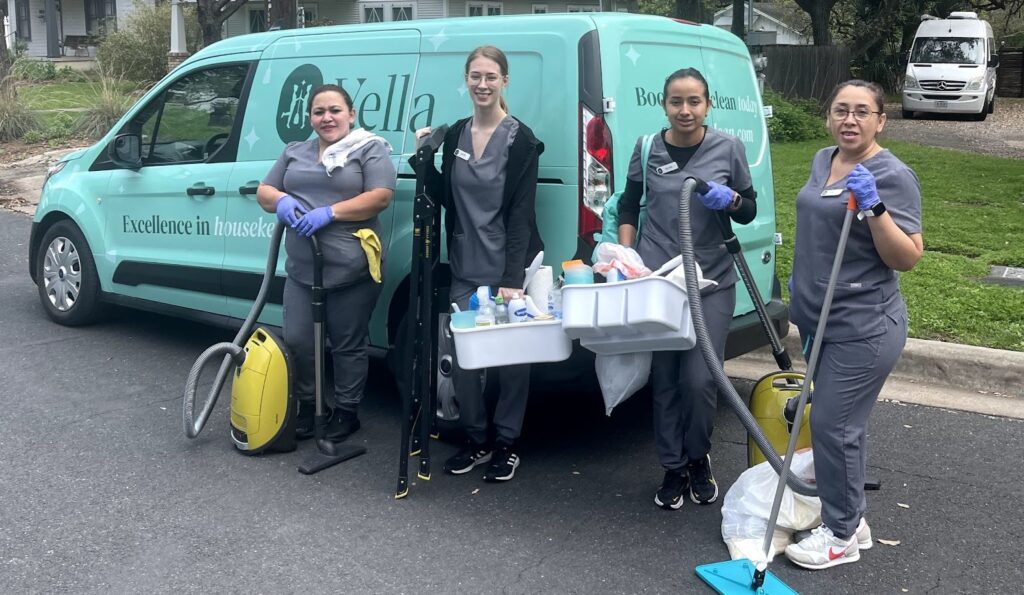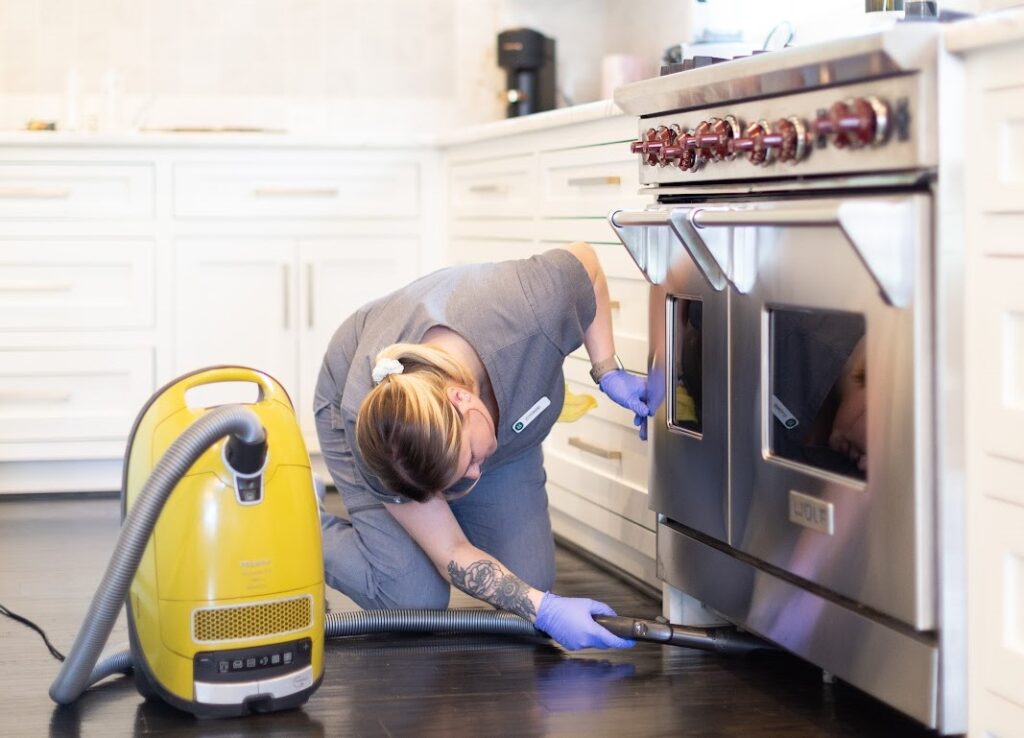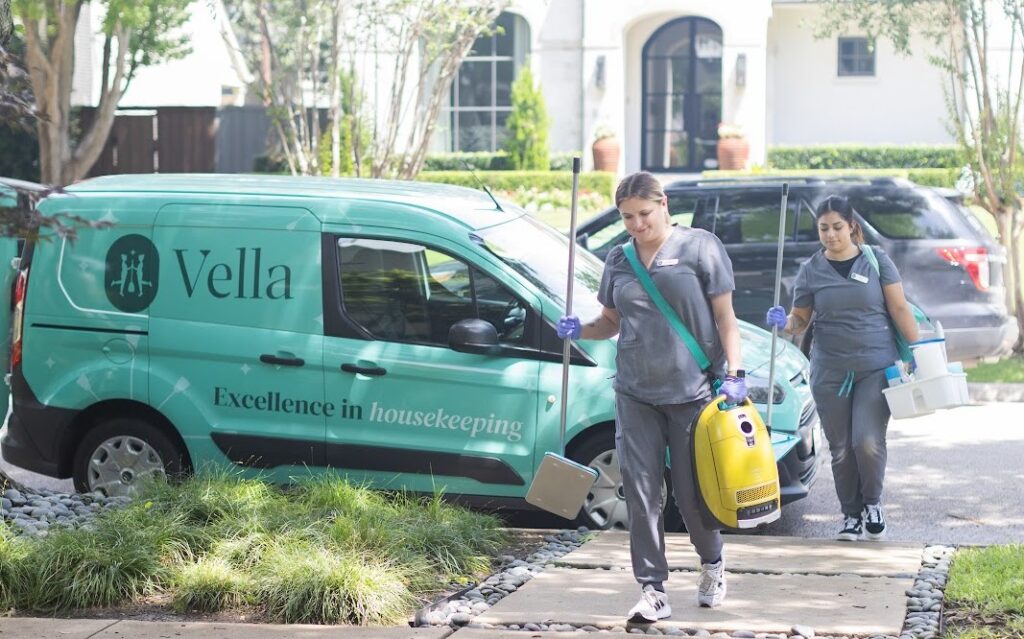A clean kitchen is the heart of a happy home. It makes cooking easier, keeps your space healthy, and even helps your appliances last longer. Let’s explore how deep cleaning your kitchen can make a big difference and learn simple tips to get started.
The Hidden Challenges of Kitchen Cleaning
Your kitchen isn’t just where meals are made—it’s also where dirt, grease, and bacteria hide. From light fixtures to behind appliances, these less obvious spots can become breeding grounds for allergens and odors if left unattended.
Regularly tackling these overlooked areas with the right cleaning techniques keeps your kitchen fresh and healthy. However, deep cleaning an entire kitchen in one go can be overwhelming without a clear plan. That’s where a zone-based approach can make all the difference.
Strategic Approach to Deep Cleaning
Breaking your kitchen into zones simplifies the deep-cleaning process. Here’s how to tackle different surfaces and areas effectively:
Granite: For everyday spills on your kitchen granite, use a soft, dry sponge. This will wipe away any stains or dust. For a deep clean, use a non-acidic cleaner like Seventh Generation Dish Soap. It’ll help prolong the life of your granite seal and will keep your countertops looking beautiful for years.
Tiles: It’s crucial to clean tile countertops every day to avoid mold and other bacterial growth. Avoid soap-based cleaners, which can leave residue; use a non-corrosive cleaner and rinse thoroughly.
Stainless Steel: Make appliances shine with a paste of baking soda and water. Gently rub the paste onto surfaces, then rinse and wipe dry.

Step-by-Step Guide to Deep Cleaning Your Kitchen
Here’s a simple checklist to make your kitchen sparkle:
Supplies You’ll Need
- All-purpose cleaner
- Degreaser
- Dish soap
- Baking soda
- White vinegar
- Microfiber cloths
- Scrubbing brushes and sponges
- Broom, mop, and dustpan
- Garbage bags
As for specialized tools, all you need is a non-scratch scrubber, a steam cleaner (optional), and a vacuum cleaner like Miele for hard-to-reach areas. Before you get into deep cleaning, clear countertops and floors to create an open workspace. Lay down protective sheets or old towels to avoid drips or spills that damage surfaces.
Now that you are equipped with all the essential ingredients, here is the technique to follow:
- Systematic Removal of Items
Start with the pantry and fridge. Discard expired items and group similar items together.
Remove small appliances, utensils, and other items from countertops and drawers.
- Organizing While You Clean
To organize your stuff, separate items into keep, donate, and discard piles. You can also use bins or containers to temporarily store items removed from the kitchen.
Even when you follow all the right steps to clean your kitchen, when you start cleaning, you will inevitably encounter tough-to-clean spots, stubborn stains, and grease. This is how you can deal with them:
- Stovetop and Oven Cleaning
To clean the stovetop, start by removing the burners and grates and soak them in warm soapy water. For oven cleaning, apply a baking soda paste or a commercial degreaser inside the oven. Let the substance sit for 20-30 minutes before you scrub it.
- Cabinet and drawer interiors
To clean cabinets, take a damp cloth and a mild cleaner, and wipe down the interiors of cabinets and drawers. For corners, use a vacuum with a crevice tool. For stubborn grease, use a mix of vinegar and warm water and gently scrub them off.

- Refrigerator and Freezer
Start by unplugging your refrigerator. Remove the shelves and drawers to soak them in warm soapy water. Wipe down the interior with a solution of baking soda and water to eliminate odors. Wait for everything to air-dry before re-plugging it.
- Sinks and Faucets
To add shine to your sink and faucets, scrub with baking soda focusing on the drain and around the faucet. Use a toothbrush to clean around tight spaces and a vinegar solution to remove water stains.
After scrubbing and wiping down every nook and corner of your kitchen, it is now time to do the final touches.
- Wipe down small appliances before placing them back.
- Add a vase of flowers or light a scented candle for a welcoming touch.
Decoding Grease and Grime: Advanced Removal Techniques
Have persistent grease spots in your kitchen? Worry not! You can get them off with a few specialized grease removal techniques. Here are a few:
- Specialized Tools for Persistent Grease
Tougher stains? Some advanced cleaning tools—steam cleaners, degreasing agents, and non-scratch scrubbers—are here to help you.
- Chemical-Free Degreasing
Eco-friendly alternatives like baking soda and citrus-based cleaners are there to tackle stubborn grease. If that doesn’t help, consider a chemical-free degreaser like Bon Ami.
- Preventative Measures for Grease Build-Up
Regular maintenance is a must to maintain the cleanliness of your kitchen. Use splatter screens and wipe down surfaces regularly to prevent buildup.
Eco-Conscious Cleaning: Sustainable Practices for Your Kitchen
Cleaning doesn’t always mean using harsh chemicals. Take a look at some eco-friendly products and tips for sustainable cleaning of your kitchen:
- Adopting Zero-Waste Cleaning Solutions
Zero-waste cleaning strategies—using reusable cleaning cloths and biodegradable cleaning agents—can save both your wallet and the planet.
- Multi-Use Cleaning Products
Choose products that serve multiple purposes. For instance, a neutral disinfectant cleaner can be used to clean many surfaces and materials without causing damage. It is more economical than getting different products for different surfaces.
- Leveraging Natural Ingredients for Effective Cleaning
Common household ingredients such as vinegar and lemon mixed with baking soda work wonderfully in stain removal. They also work on many surfaces.
Maintaining the Deep Clean: Long-Term Strategies
Maintaining a clean kitchen requires a consistent daily cleaning routine alongside periodic deep cleaning. Simple habits like wiping down surfaces and tidying up immediately after use can significantly extend the time between deep cleaning sessions. Additionally, using innovative tools like robotic mops and air purifiers can make daily maintenance easier and save time.
When to Call the Experts?

When grime is too stubborn to clean, or there’s persistent odor or discoloration, it is a sign that you need professional help. Professional service is a worthwhile investment to maintain a hygienic and efficient kitchen.
Why Choose Vella?
If you’re ready to take the hassle out of kitchen cleaning, Vella Cleaning Services is here to help. Our professional housekeepers use eco-friendly products, advanced tools, and proven techniques to deliver spotless results every time.
Special Offer: Take our cleaning quiz today and enjoy 20% off your first session!



